FEATURES|COLUMNS|Ancient Dances
Monklife, Part Three: Mantra, Mudra, Movement, Mask – Steps to Embodiment
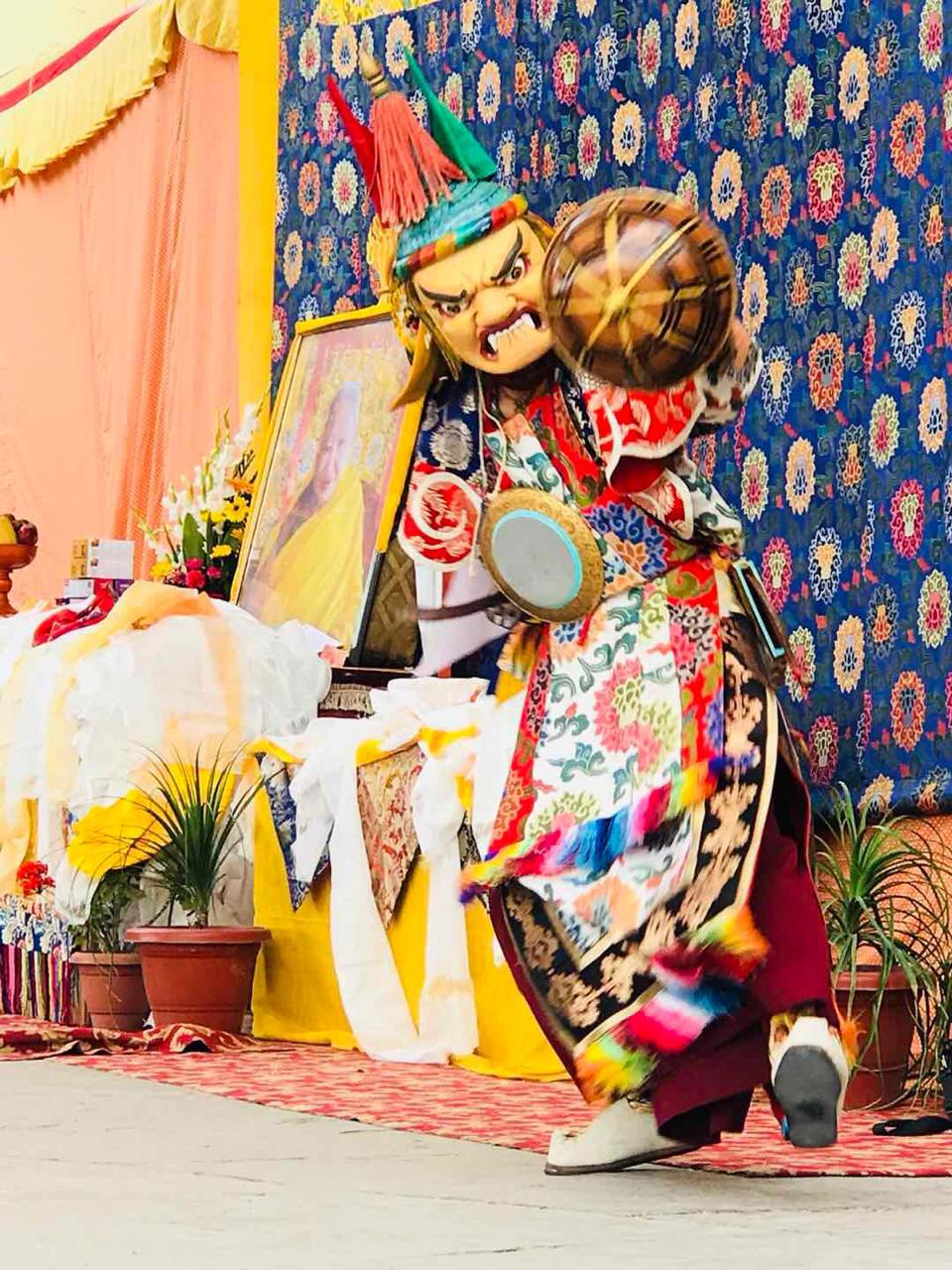
Keypadrigar, a dance for two heavenly warriors, Pawo,
Dorje Drak Monastery. 2019. Image courtesy of Dorje Drak
One reason dance is a kind of living archeology is because, as a vessel of expression equal to the whole body, it can carry many components of meaning, just as your own body carries the meaning of your whole life. Dance in tantric monasteries is ever-present. The most well known Tantric Buddhist dance is monastic Cham, such as seen at large danced ceremonies lasting several days.
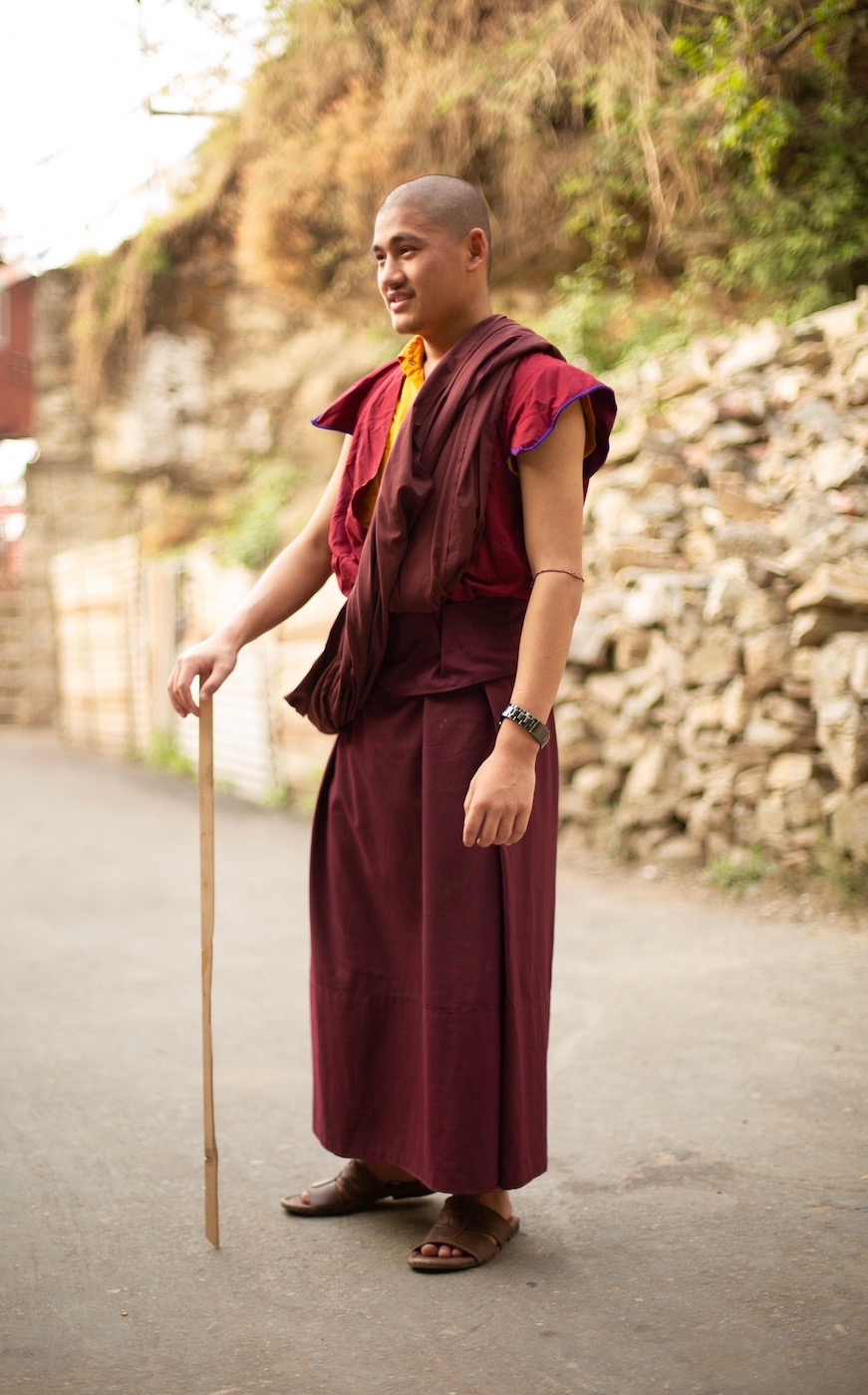
Lama Dawa Norbu arrives for Cham practice. 2019.
Photo by Jonathan Greet. From Core of Culture
Over the years, certain Western dancers have “wanted to learn Cham” as if it was like learning Martha Graham technique. Cham is not isolated in the monks’ lives as something remote that only a few undertake. Cham is part of a movement continuum, an extension and expansion of ritual life. Just as silence is the source of sound and silence is the source of the voice, so too is stillness the source of movement; moving from non-being into embodied being. Monastic stillness is the source of the dance. The dance begins with the vibrations of chanted mantra.
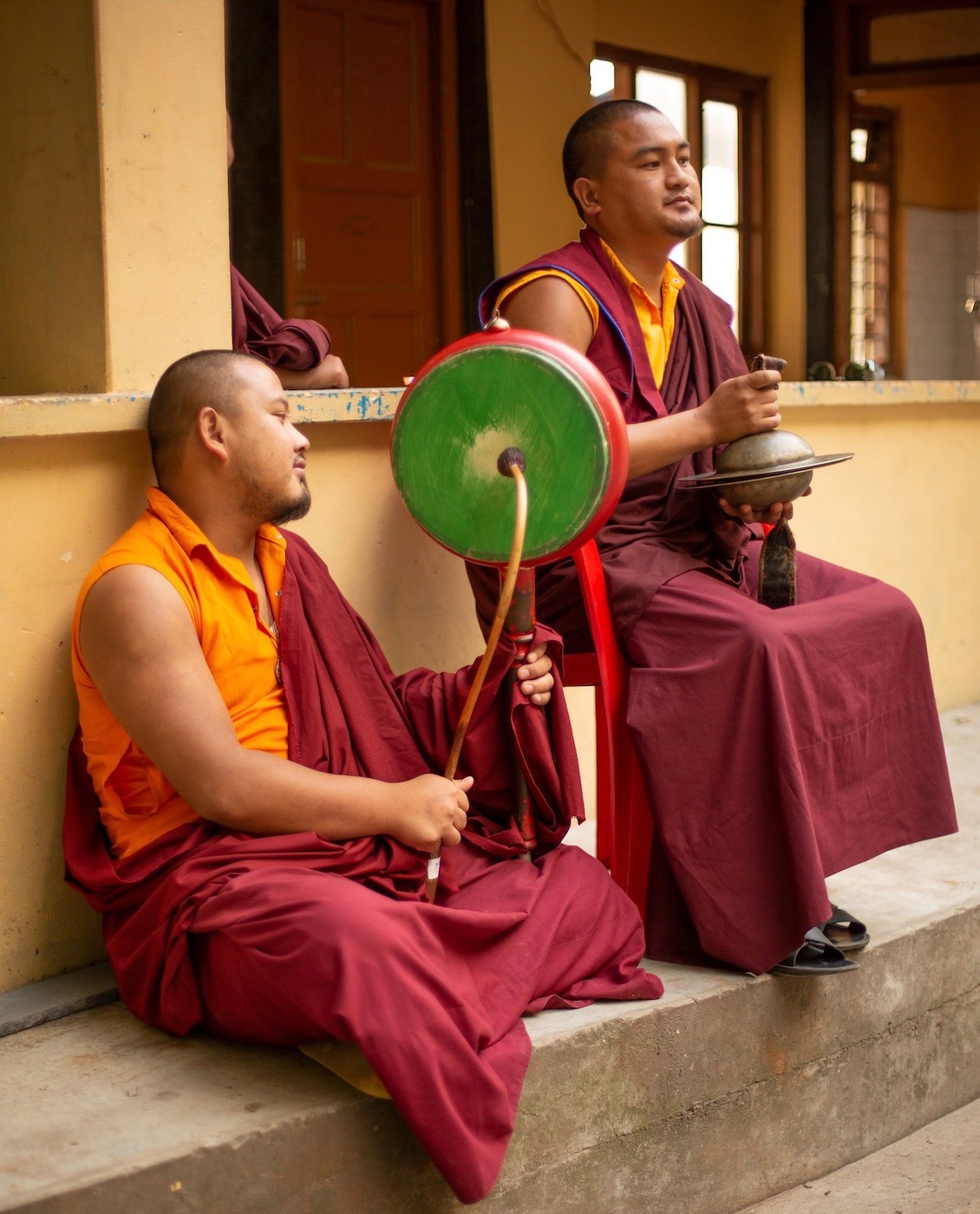
The uchung, junior ritual chant master, Lama Dadak, leads the
rehearsal with cymbals, and coaches the dancers through some
complex places in the choreography. The uchung is accompanied
by a drummer. Photo by Jonathan Greet. From Core of Culture
Monks learn chanting at an early age. Mantra in particular are syllabic phrases, some literally meaningful and some comprised of syllables with mystical and concentrative power yet without literal meaning. Om Mani Padme Hum, for example, is a well known mantra. Mantra, chanted phrases of empowered syllables, have an ontological function in Buddhism. Ontology is the study of becoming; how things come to be.

Lama Dawa Norbu, sword from his waist, mask looking down, arm
curved into a tantric mudra of protection, practices the Cham dance
Keypadrigar, heavenly warrior. 2019. Photo by Jonathan Greet.
From Core of Culture
Mantra come from the void; the vibrations of their sounds form the very shape of the mystical-physical cosmos. In this, mantra, can be considered yantric, where the geometrical yantra is understood as the originating shape of the sound. Mantra can be understood as the primal evocation of a deity from utter nothingness; voiced from silence into sound and life.
Mantra are associated with various meditation deities, called yidam. The recitation of mantra is to provide a substratum of vibration and focus to sustain the unbroken visualization of the deity in the yogic practice. This is the beginning phase of Cham dance. In meditation practice, it is called “calm stabilization,” when a mental state is held for the purpose of further yogic exercise.
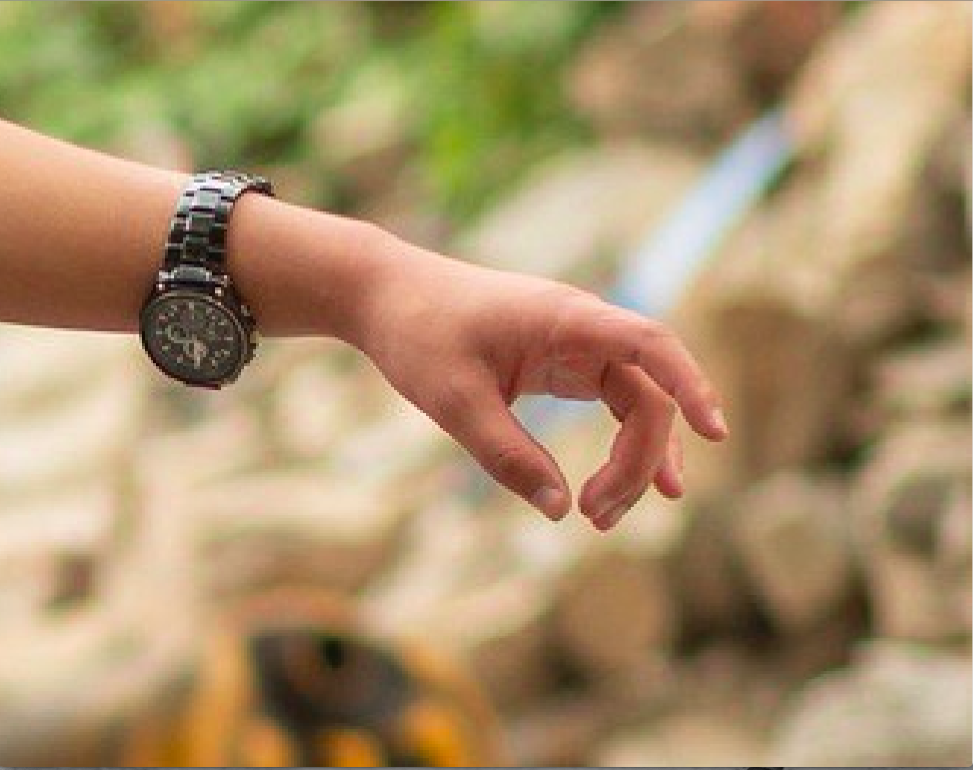
A mudra, empowered hand gesture, from the dance Keypadrigar. Cham practice
at Dorje Drak Monastery, detail. 2019. From Core of Culture
Mudra are empowered hand gestures, ubiquitous in Hindu and Buddhist art and religion. Strangely—or perhaps not considering the intellectual bias against the body in historical Western academia—mudra have been little studied. The world’s first serious Western attempt to codify and understand mudra came from a female Swedish art nouveau painter Tyra Kleen in 1923. An exhibition of her work was shown at London’s Victoria and Albert Museum in 1924. Since then, very little scholarship into the performative aspects of Tantric Buddhism has been done.
It is easy, too, to see how complex it is to crack what is nothing other than an ancient esoteric code, like Aztec hieroglyphs. Meanings are deep and rich, multivalent, and embodied. Mudra supply symbolic sequence and activate the mind-body complex.
Art historians use mudra to interpret iconography. Beyond that, mudra are subtle and powerful conduits of mental character and composure. Mudra do offer themselves as good examples of the kind of fundamental body use in tantra, beginning to be seriously explored as notions of the body are more frequently exchanged and understood, and as dance researchers collaborate with specialists in new disciplines, such as Buddhist studies.
Particularly in the practice of Tantra of all types, mudra are a parallel sign language of mystical and ritual life that are found, sequentially flowing, in every Buddhist ritual and in every Buddhist dance. The mudra in Cham include some hand positions found only in the dance vocabulary. Others are hand gestures that come as second nature through familiarity. The grace of monks is well ingrained through a ritual life of chanting mantra and performing an endless stream of varying mudra. Monks are inherently and naturally graceful.
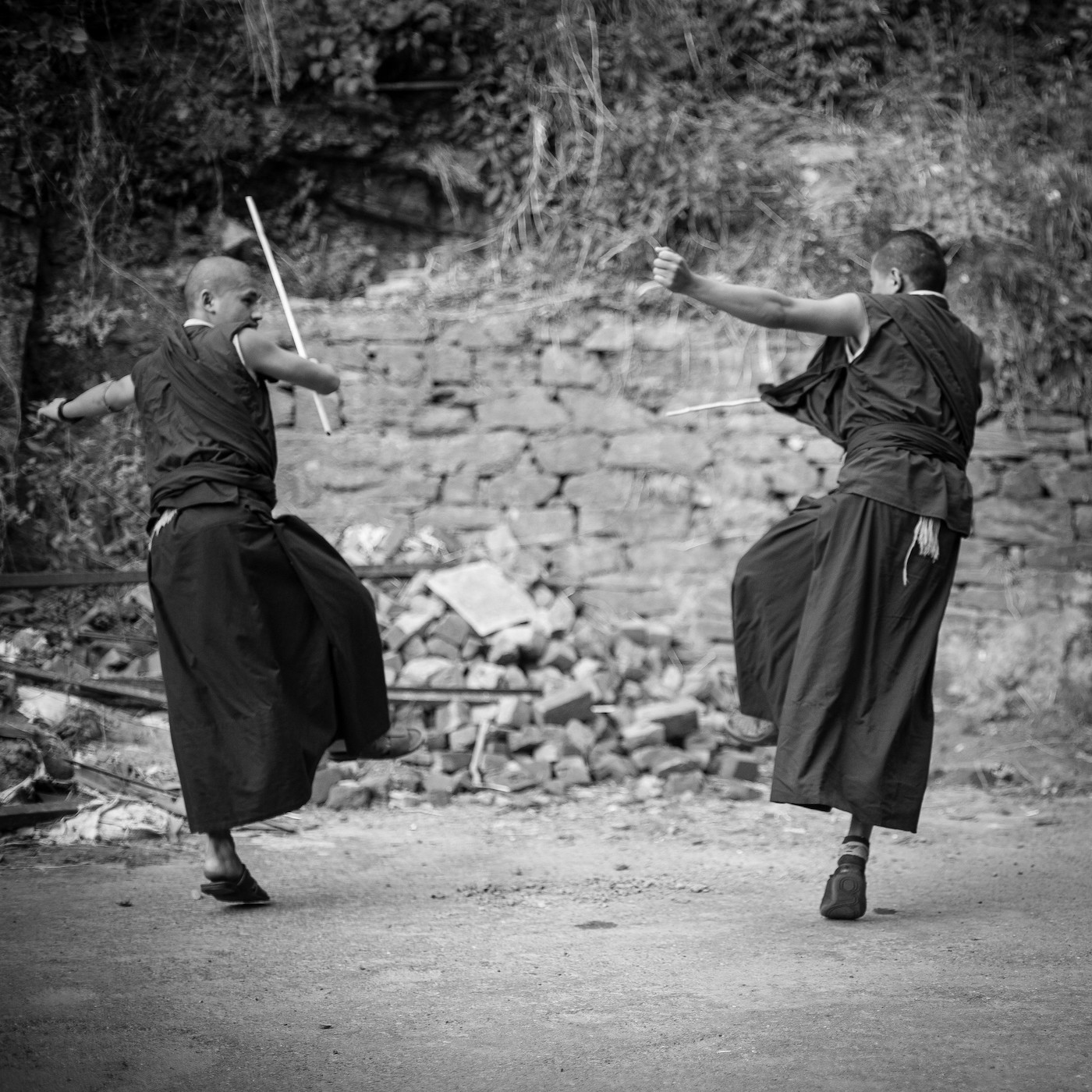
Lama Nida, right, and Lama Dawa Norbu, left, practice Keypadrigar, a two-man
sword dance for heavenly warriors, pawo. 2019. Photo by Jonathan Greet.
From Core of Culture
To be at a monastery is to be in a poetic environment. A landscape of ancient hand symbols whose ability to channel various mental powers comes to life at a Buddhist monastery. Very ancient ways of using the body as a conduit for spiritual energy are employed. These include the canon of hand gestures. From a seated meditation posture in the lotus position, these mudra are taught to transform the body and conduct the mind. Mudra are a way of sustaining the techniques needed to succeed with visualization during Cham dance. Mudra are activating distillations of yogic power, physically embodied.
Movement
The Cham itself—the “deity action”—the fluid, divine movements of the transformative deity, gives legs to seated meditation, and in this, a tantric visualization becomes a tantric embodiment. Deities don’t walk, they dance.
They gambol. They amble. They stumble, spiral, and roll in the clunkiness of this dimension. Hitting the ground like a vortex. Deities in Cham are always sort of barreling, balancing, displaying their powers. Cham bristles with energy, even after hours and days of dancing.
The deities are already dancing as tantric visualizations birthed in the minds of the dancers. Imagine blowing up a balloon to the exact size of your body. Now, blow it up a little more, so the balloon is the shape of your body, but bigger. This is how the embodied deity rides, the dancer “swimming along with the deity,” as a 12th century instruction says. Cham is the yoga that brings these visualizations to life for the sake of observers, and as an act of yogic skill.
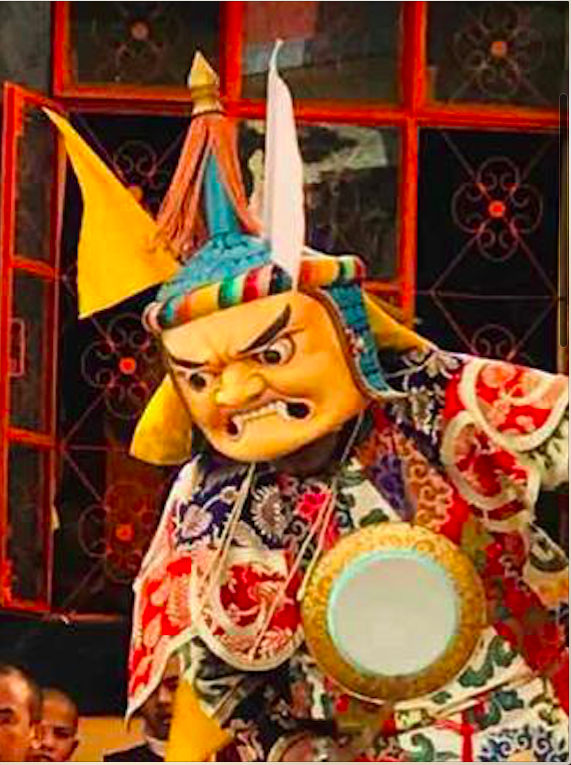
Heavenly warrior dance, Keypadrigar. Dorje Drak Monastery. 2019.
Image courtesy of Dorje Drak
The mask is ultimate subordination of the ego as the monk becomes the deity, larger than life, emanating spiritual powers by their very presence. Not all Cham is public. All Cham is tantric. All Cham reveals a mystical ontology: mantra, mudra, movement, mask. The dance holds the mystical mantra, the mudra technique, as well as the iconography, by embodying these in consciousness-transforming movement patterns. Cham is a tantric yoga, for both the observer and practitioner.
Please enjoy these photographs, and a 17-minute video by Jonathan Greet, of two monk dancers from the Nyingma school monastery Dorje Drak in Shimla. They are practicing and learning a two-man sword dance, Keypadrigar (the dance that illustrates this article). In this dance, two heavenly warriors, pawo, denizens of Zangdopalri, Guru Rinpoche’s Copper-colored Paradise, display their protective finesse. What will be masked, heavily costumed, danced on a stone-lined courtyard, and with metal swords—is now without any costume or mask. Sticks take the place of swords. Slippers take the place of boots. We are in a parking lot.
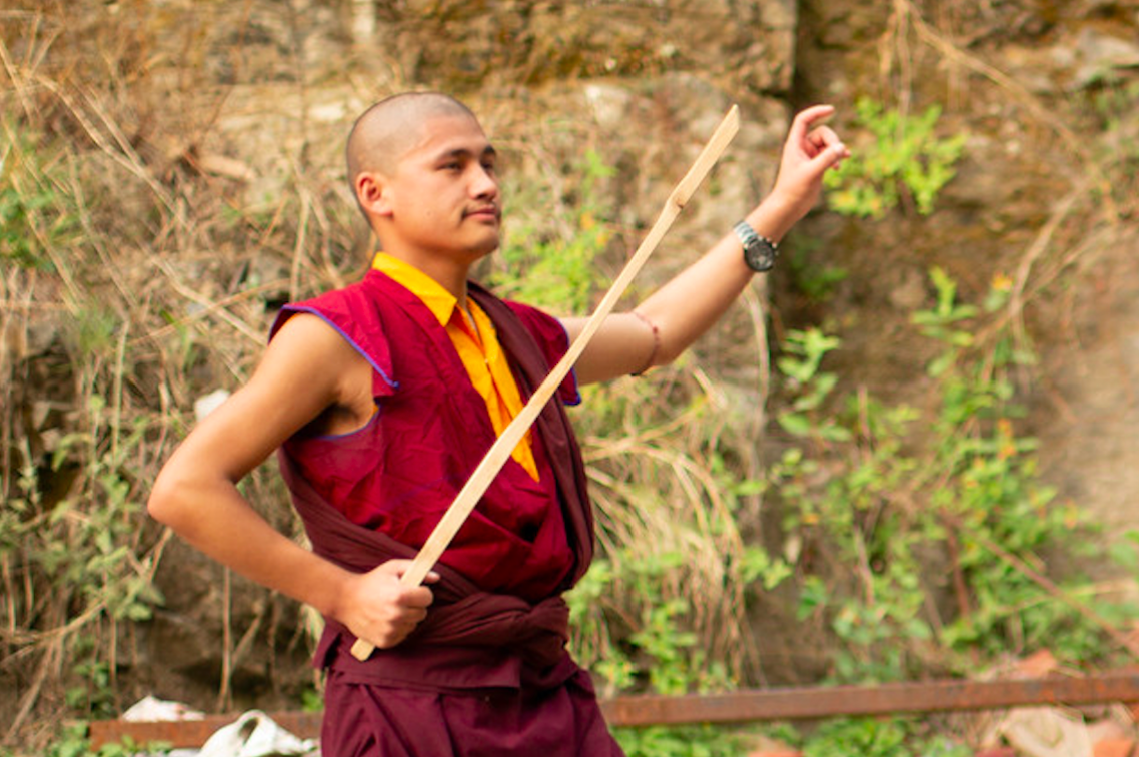
Lama Dawa Norbu practices the sword dance Keypadrigar. He shows the visualization technique known as “deity pride.” It requires an upward way of carrying the mask, correct sword technique, and mudra held high. 2019.
Photo by Jonathan Greet. From Core of Culture
Nevertheless, the Cham steps become the substratum upon which the embodied deity can remain present. What might seem a simple step is not at all simple under a heavy mask, and performed for hours and days. Cham is a patterned way out, a communal psychic and spiritual rebirth. Cham is a sign of yogic mastery, the deity dancing through the samsaric maze, setting illusory reality on fire.
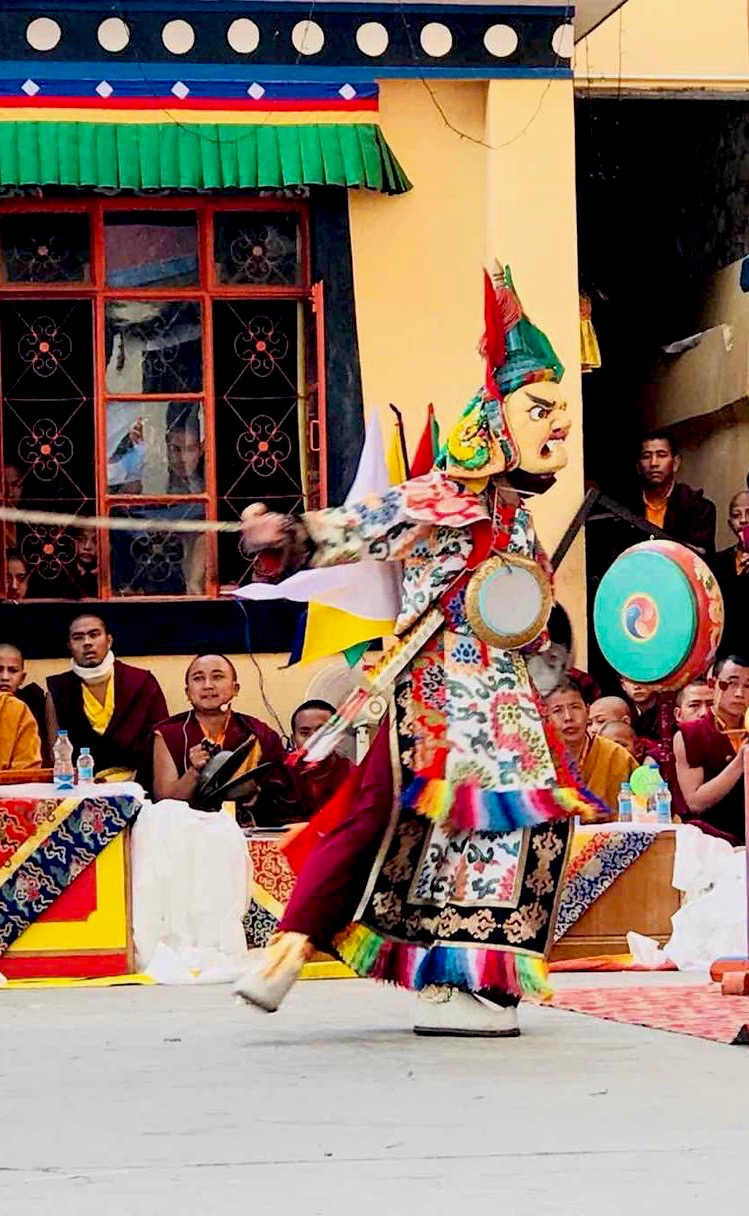
Keypadrigar, a sword dance of heavenly warriors. Dorje Drak
Monastery. 2019. Image courtesy of Dorje Drak
It is due to an act of historical cultural heroism that these dances exist. When monks were fleeing Tibet in the middle of the 20th century, dances could flee too in the bodies of dancers, even when the dance texts were left behind or destroyed. These dances from which Keypadrigar is a part, date to their visionary origins in the 16th century. Nyingma master Guru Choewang, whose yogic visions became the dances we see today, created whole canons of dances.
The late reincarnated master Chetrul Rinpoche personally transmitted all the dances in exile in the 20th century—every step—and, in addition, he rewrote the complex text of the dances into a Cham Yig, or monastery dance manual.
It is a monastery treasure that I have been allowed to view. The script changes character through the course of the prescriptive document. The writing itself is charged with energy and rhythm. This is remarkable. It is far more the case where dance lineages that were carried into exile do not see their dance texts restored, nor their dances re-established with the quality of dance seen at Dorje Drak.
Whatever else, this Cham is surely a victory dance. The dance proved durable enough to survive, to hide in essential form, to emigrate, re-establish, and take new root; to carry yoga teachings and embodied iconography to the next generation. With their beaten sandals, huge watches, and sticks-for-swords, Lama Dipa and Lama Dawa Norbu are beautiful; they are the vessels of an ancient lineage, exactly the spiritual warriors we need.
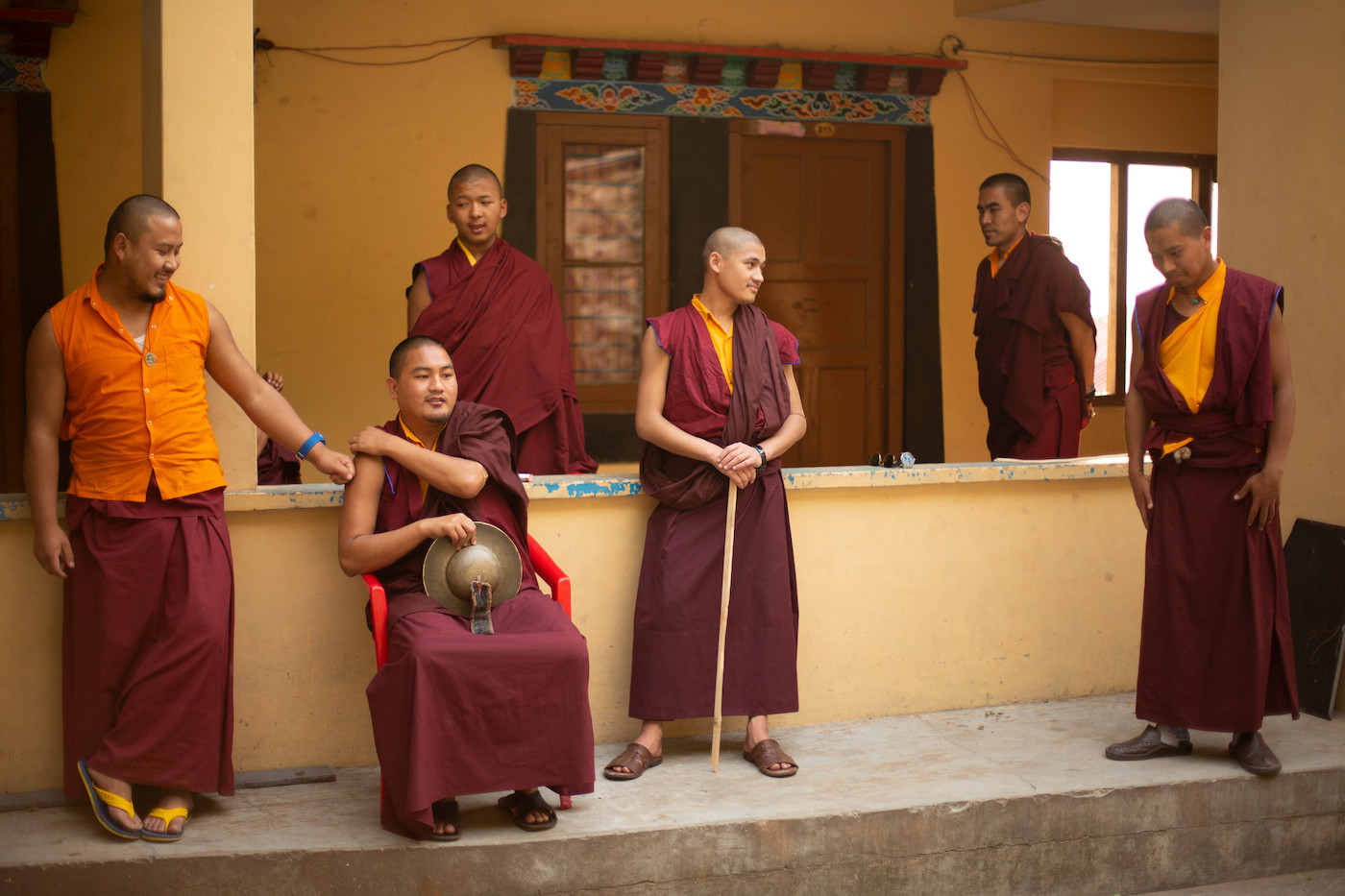
The two dancers, with stick and with bowed head, stand by the uchung who led the practice and the drummer. Their modesty, excellence, and humanity are clear to see. 2019. Photo by Jonathan Greet. From Core of Culture
Thanks to Dorje Lopon of Dorje Drak Monastery, Shedup Jigmed, dancers Lama Dawa Norbu and Lama Nida, and Uchung Lama Dadak.
Additional thanks to Dr. Thinles Dorje, Jonathan Greet, and Dechen Lundup.
Special thanks to Barbara Kipper
See more
Related features from Buddhistdoor Global
Monklife, Part One
Monklife, Part Two: An Obstacle Clearing Ritual














